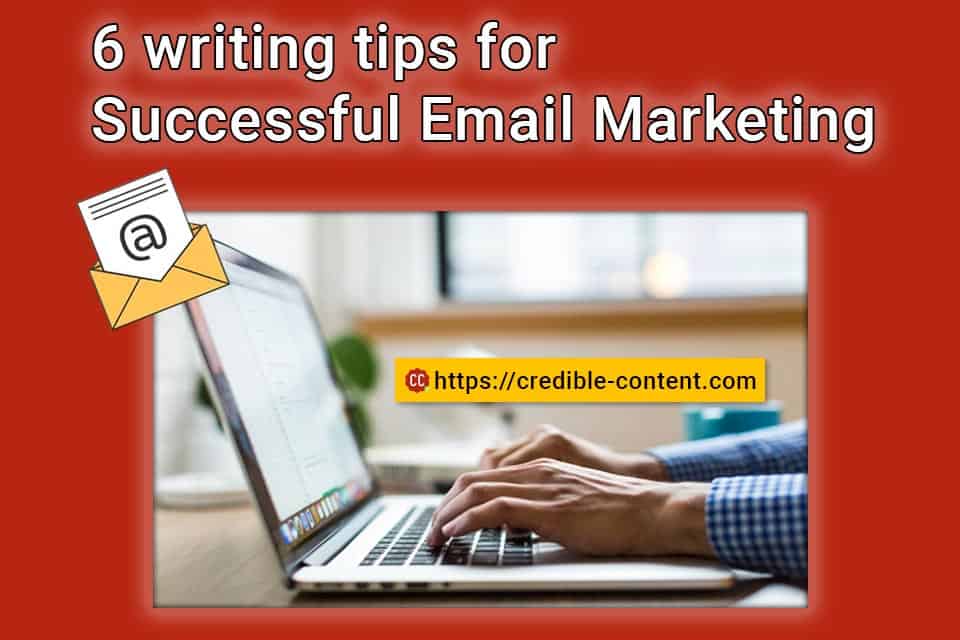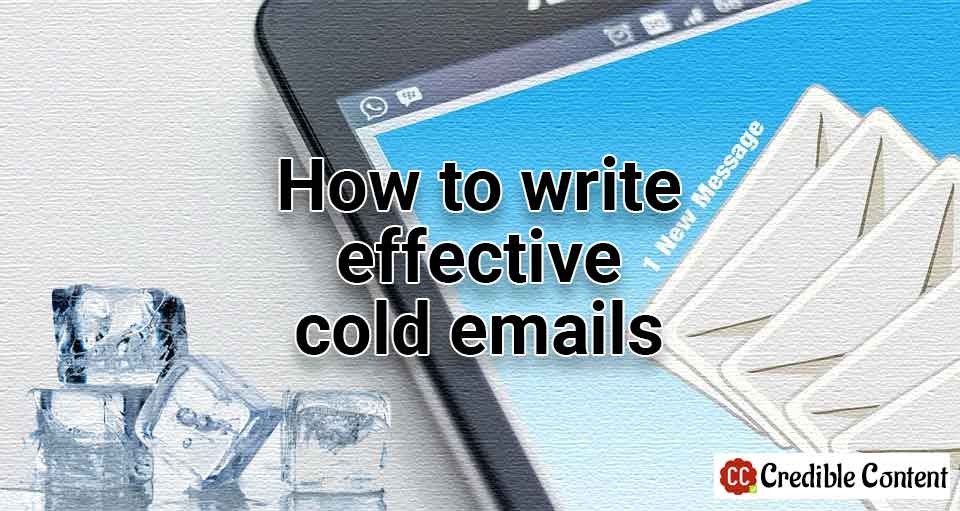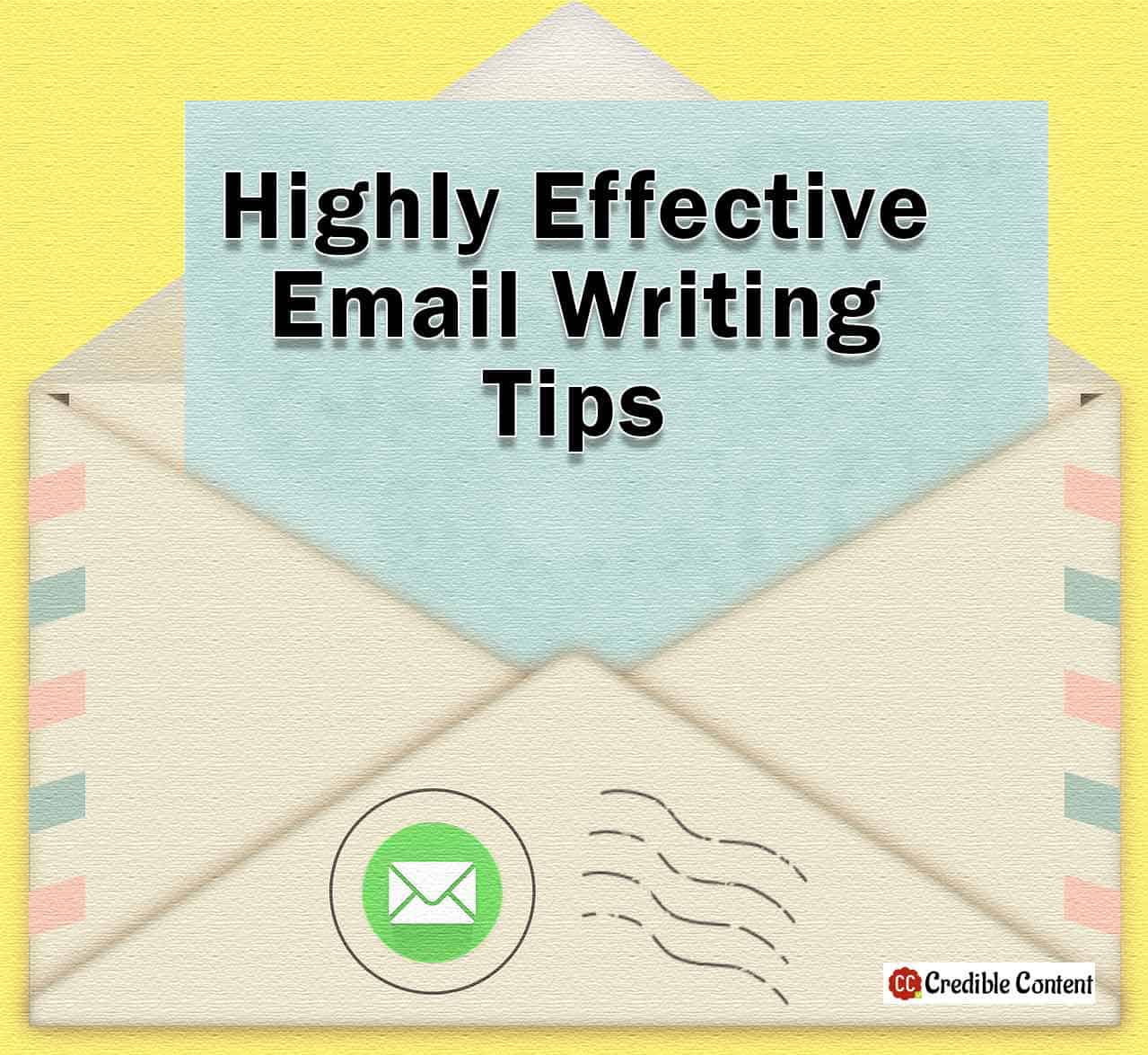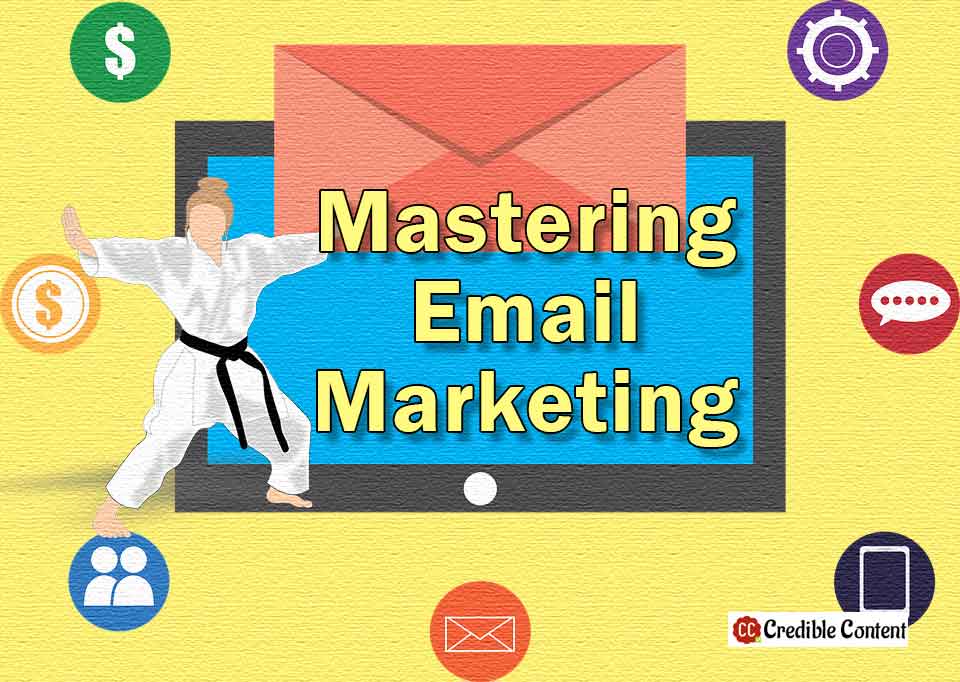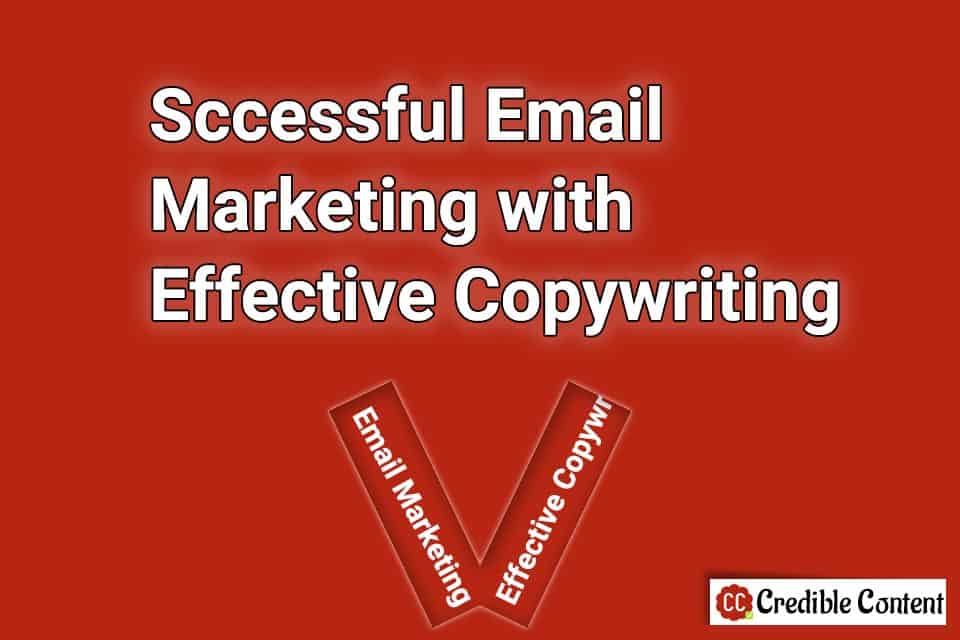
Successful email marketing with effective copywriting.
These days I’m getting lots of queries from clients who want to run successful email marketing campaigns and they need my copywriting services.
According to Statista, an estimated 306.4 billion emails travel the length and breadth of the web every day.
The graph below shows the trend over a period of 2017-2023.
As you can see, the number is projected to reach 347.3 billion emails by 2023.
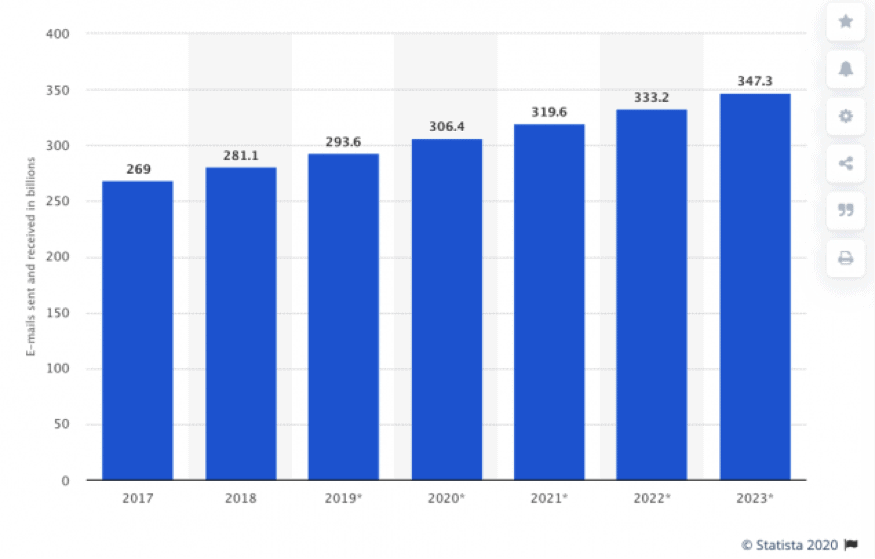
Graph of number of emails being sent during 2017-2023
It is not just the number of emails being sent and received that excite digital marketers and general clients.
It is the ROI in the stats.
This is a slightly old finding, but on an average, for every $1 that you spend on email marketing, you get a return of $38. Some even claim $40.
Here is another pleasing graphic that I found on this link.

The highest ROI is in email marketing.
Of course, you may look at these numbers cynically because at personal level, you may not have experienced such a startling success with your email campaigns.
The problem is not with the numbers, the problem is with the implementation.
When people claim that you can earn $38 for every dollar you spend on email marketing, you must do whatever is required to make your email marketing effective.
What makes your email marketing successful and how does copywriting contribute?
Email marketing is not about sending emails to a group of subscribers or email ids though, it is a big part.
Successful email marketing is about active engagement.
Here are some attributes that enable you to call your email marketing successful:
- A greater number of people open your email messages.
- A greater number of people read your messages.
- A greater number of people respond by either replying or clicking the call-to-action button or link.
All these three points are very important to make your email marketing successful.
If people are just opening your message and do nothing else, you aren’t achieving much.
Recently a client told me, with a touch of pride, that his open rate is 22%.
Marvelous, I said. Then how do you want me to contribute?
I’m not getting any business, he replied with a subdued tone.
Unless people open your messages, read them, get affected positively and then contact you to do business with you click the link to buy from you, you cannot call your email marketing successful.
Everything needs to work in tandem.
The success of your email marketing depends on the following factors:
- The quality and growth of your email list.
- The trust factor enjoyed by your email marketing service provider (so that your emails are not redirected to the spam folder).
- Your reputation – are people familiar with you? Do they know what you represent and why you are sending them emails? Do they trust you?
- Your subject line – no matter how familiar they are with your name or brand, unless the subject line compels them to open your message, they are not going to open it.
- The main headline – this is going to be the biggest work. Only if the headline captivates them, they’re going to read the rest of the message.
- The convincing copy that keeps them engaged, excited and leads them to a culmination.
- The most appropriate call-to-action.
Effective copywriting for email marketing
My clients often hire me for my content writing services but when I’m writing marketing emails, I provide them my copywriting services.
You may like to read this: Difference between copywriting and content writing.
Copywriting informs, educates, influences and sells.
Content writing informs and educates.
Marketing means selling.
When you’re sending out emails wanting people to buy from you or do business with you, you’re selling an idea.
They have a problem, you offer a solution.
For example, if I send you an email marketing campaign with the subject line “Better conversion rate for your email marketing with my copywriting services” I am assuming that you are worried about your conversion rate.
Problems may include…
Not many people are opening your messages.
Even if they open your messages, they don’t respond to them.
Even if they contact you, there is some communication gap and they don’t become your paying customers and clients.
The gist is, you’re looking for a solution that can help you improve your email marketing conversion rate and I’m offering you the solution.
Frankly, without effective copywriting, there is no email marketing.
The communication dynamics are different in email marketing.
You need to be bang on the main message of the email.
People don’t want to read long messages unless they are reading some scholarly discourse on a highly technical B2B product.
They have a problem.
You offer a solution.
You offer an irresistible proposition.
You convince them, without making them feel vulnerable or defensive, what a great loss it is going to be not doing business with you.
For such a message, you need copywriting.
You need a copywriter who can write convincingly and persuasively.
The copywriting in your email marketing campaign must be able to directly talk to the recipients with zero distraction.
Remember that most of your recipients will be reading your message on their mobile devices.
They may be in a highly distracted state.
They may be travelling.
They may be in a meeting.
They may be standing in a queue.
They may be sitting on the toilet seat struggling with constipation.
Amidst all this, your copywriting must ensure that the message gets across.
Some tips for effective copywriting for successful email marketing campaigns
Here are some tips to follow when writing copy for your email marketing campaigns.
There are no hard-and-fast rules because every audience is unique, but you can apply the general template that works pretty much for every audience.
Then you can make small tweaks here and there for better conversion rate.
Another thing you must keep in mind is that there is no magic wand.
You will have to experiment.
You will need to gather data and allow your email marketing service (MailChimp, for example) to analyze your campaigns for at least a month to give you some usable insights.
Anyway, there are some things you can do for effective copywriting for successful email marketing campaigns…
Create a killer subject line
As mentioned above, your subject line is very important.
As a copywriter, coming up with the most compelling subject line is one of your greatest challenges.
If the subject line is not great people don’t open your email message and if they don’t open your email message, no matter how great your email message is, everything will go down the drain.
Hence, spend a lot of time coming up with the most appropriate subject line.
It doesn’t have to be out of this world.
There is no need to say something earthshattering.
You don’t need to shout “Earthquake!!” just to get their attention.
Just mention something that will make them open your message in a relevant frame of mind.
Offer something they need, in a clear language.
Make better use of the preview text
These days, many email clients such as Gmail show a small preview text in the inbox even when you haven’t opened your message.
This is another opportunity for you as a copywriter to convince people into opening your message.
Write for easier reading
More than 100 characters in a sentence including spaces?
More than a sentence in a paragraph?
You have already lost most of your audience.
Write very short sentences so that they are easier to read and comprehend on a mobile device, probably while the hand is shaking.
Represent one idea through one sentence.
Use simple sentences, avoid compound sentences.
As far as possible, make sure that your message is not more than 200 words.
Lay everything down for them as clearly as possible.
Never use words and expressions that can be confused or mixed with other words and expressions.
Preferably, write in the first person
It also means that you must know the name of the person to whom you are sending your email messages, but that’s a different issue.
Email messages written in the first person elicit better response compared to email messages that read like as if they have been written to a group.
Again, this is not a hard-and-fast rule – it depends on your audience.
Your copywriting style must reek of enthusiasm
If you don’t sound enthusiastic, how can you excite your audience into taking an action that requires them to go to the trouble of entering their credit card details and buying your product or service?
But make sure that your enthusiasm is not fake.
Remember you’re offering them a solution to their problem.
You are feeling good about the fact that after buying your product or service, their lives are going to be easier or enriched.
Feel good about providing them that solution.
When you feel good while writing the copy, it will show through your writing style and then it will get conveyed to your audience.
Don’t refrain from using persuasive language or power words
Of course, don’t overdo.
Remember you are not writing a Shakespearean play.
Your protagonist is not going to be stabbed by his own supporters.
On the other hand, unless you tell them to do something, how do you expect them to do it?
Hence, tell them that it is a bargain.
Let it be known to them that it is a never seen before offer.
It may even be a once in a lifetime opportunity.
Can my copywriting quadruple your email marketing conversion rate? Heck, why not?
Is it a limited offer available to just the first twenty responders?
Cater to their greed.
Invoke their insecurities.
Just make sure that you don’t trigger a “flight, freeze or fight” response with too much aggression or assumption.
Most importantly, don’t lie.
Always mean what you say.
Write email copy with a specific goal
Don’t have multiple objectives for a single email marketing campaign copy.
Focus on one thing.
Let the objective be just one.
If you have multiple objectives this will stop you from effective copywriting and you will also end up confusing your readers.
So, if you want people to download your white paper after reading your email campaign, just talk about the benefits of downloading the white paper.
If you want them to download and install your mobile app, just focus on that.
Avoid messages like “Although I’m asking you to download my e-book, now that you are reading this message, here are the services that I offer…”
They will neither download your e-book nor contact you for your services.
In conclusion, I have observed that the best copywriting for successful email marketing campaigns comes from the heart.
Mean what you say.
Come to the point as fast as possible.
Give your email is enough time to evolve.

